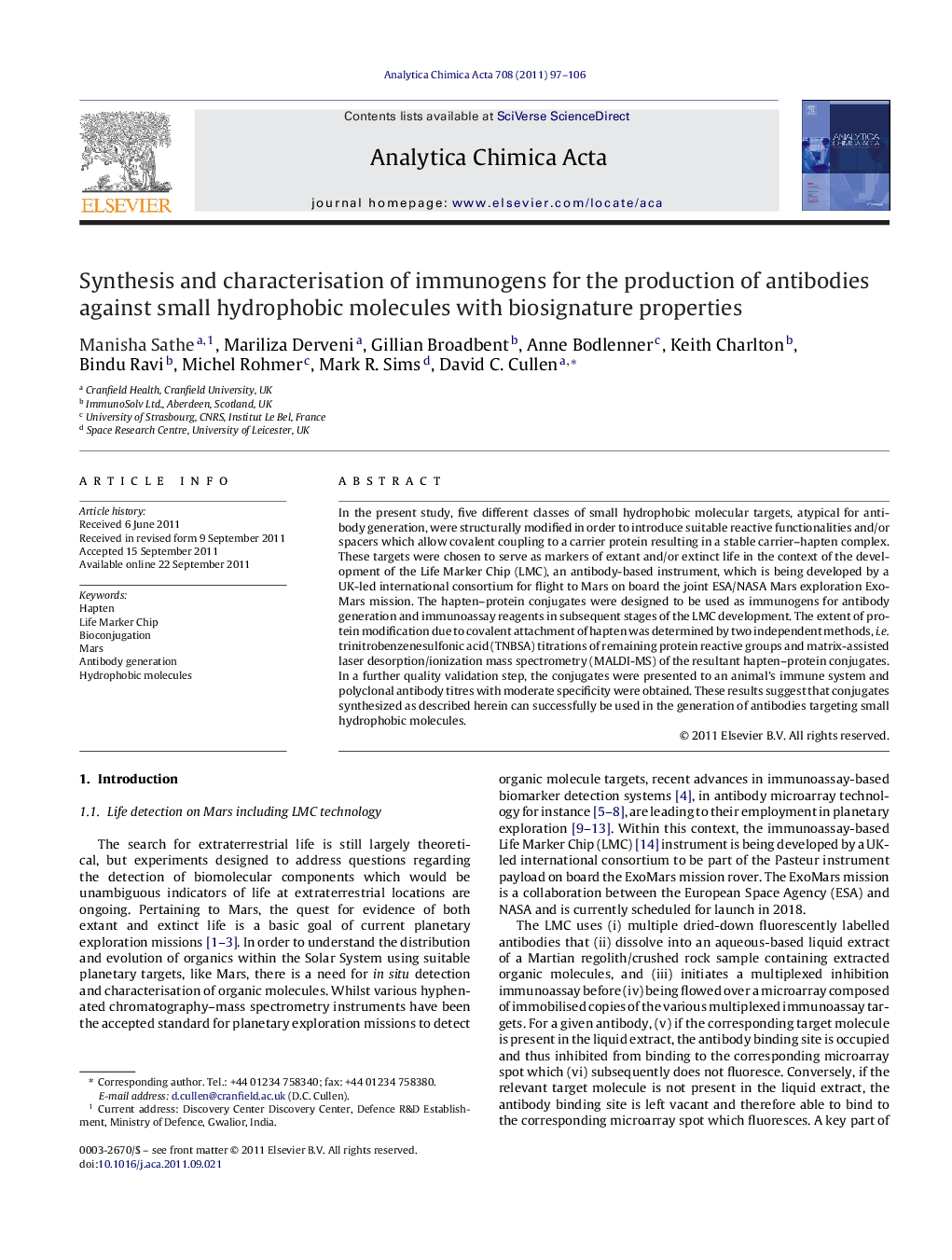| Article ID | Journal | Published Year | Pages | File Type |
|---|---|---|---|---|
| 1166385 | Analytica Chimica Acta | 2011 | 10 Pages |
In the present study, five different classes of small hydrophobic molecular targets, atypical for antibody generation, were structurally modified in order to introduce suitable reactive functionalities and/or spacers which allow covalent coupling to a carrier protein resulting in a stable carrier–hapten complex. These targets were chosen to serve as markers of extant and/or extinct life in the context of the development of the Life Marker Chip (LMC), an antibody-based instrument, which is being developed by a UK-led international consortium for flight to Mars on board the joint ESA/NASA Mars exploration ExoMars mission. The hapten–protein conjugates were designed to be used as immunogens for antibody generation and immunoassay reagents in subsequent stages of the LMC development. The extent of protein modification due to covalent attachment of hapten was determined by two independent methods, i.e. trinitrobenzenesulfonic acid (TNBSA) titrations of remaining protein reactive groups and matrix-assisted laser desorption/ionization mass spectrometry (MALDI-MS) of the resultant hapten–protein conjugates. In a further quality validation step, the conjugates were presented to an animal's immune system and polyclonal antibody titres with moderate specificity were obtained. These results suggest that conjugates synthesized as described herein can successfully be used in the generation of antibodies targeting small hydrophobic molecules.
Graphical abstractFigure optionsDownload full-size imageDownload as PowerPoint slideHighlights► Synthesis of derivatives of apolar hapten targets for generation of immunogens. ► Production and characterisation of immunogens for atypical apolar hapten targets. ► Demonstration of immune response to immunogens of atypical apolar immunogens.
